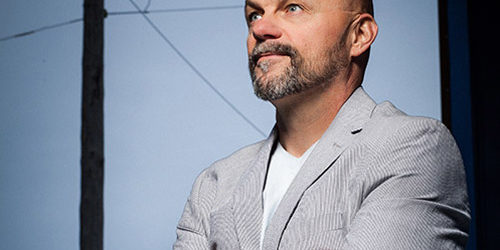Joe Gerstandt, a speaker, author, and advocate, believes that we cannot afford to continue applying a 20th century approach to an increasingly critical set of 21st century issues.
He brings new clarity and fresh practices to diversity and inclusion work, working with small nonprofits, Fortune 500 companies, and everything in between.
He’s a featured contributor to Workforce Diversity Network Expert Forum and has been published in numerous executive and diversity publications, as well as online journals.
And he co-authored the book Social Gravity: Harnessing the Natural Laws of Relationships with Jason Lauritsen.
In this interview, Joe answers questions about diversity and inclusion.
But before you read further, take a look at Joe on stage:
Ask The Expert: Joe Gerstandt
Question #1: Why do you think businesses and corporations need new clarity and fresh practices in regards to diversity and inclusion at work?
I think that a whole bunch of what is done in the name of diversity and inclusion is not terribly effective, and some of it is actually counter-productive. This is due in large part to confusion and lack of clarity regarding diversity and inclusion. Inclusion, for example, has become an incredibly popular word – more and more organizations and leaders are saying big and beautiful things about inclusion, yet most of those organizations and leaders cannot provide you with a clear and concise definition of what that means. As popular as the word has become, inclusion is a vague and abstract idea in most organizations. This makes it very difficult to figure out in a logical way, what we need to do to get there and what we need to measure along the way. The biggest mistake that organizations make is that they just start doing stuff before making sure that foundational clarity is in place.
Question #2: You’ve spoken to Fortune 500 corporations, small non-profits, and everyone in between… What are the top 3-5 questions you get asked, and what are the answers to those questions?
Should you focus on diversity or inclusion first? Both. You have to be intentional about both.
We want to be more inclusive, where should we start? Language and behaviors. Your first intervention is language, the first proof of real commitment is clear and concise definitions. What does it mean to be fully included in your organization, what does it look like, feel like, sound like, how do we know when it is happening or not happening? Once you have that clarity, you can start identifying the behaviors and practices that are needed to more consistently provide that experiential outcome of being fully included.
Question #3: What are the critical 21st century issues you see, including diversity and inclusion? Why do you find these issues critical?
There are a lot of answers to this question, but I will just speak to one. One of the most critical and limiting issues facing this work is that it is still seen as something extra, as a side project, or an HR initiative. Properly understood this work is fundamental to anything involving human beings. We have got to move beyond the point of diversity and inclusion being a separate thing and getting it fully woven into everything that we do.
Question #4: What about diversity and inclusion are often misunderstood and why do you believe they are misunderstood?
There are staggering misunderstandings about what this work is even about. People frequently come to my presentations with very specific expectations and often negative expectations. Some podcaster or talking head that has not direct involvement with this work has told them a bunch of stuff that simply is not accurate. In the book Switch, by the Heath brothers there is a great line – “what looks like resistance is often a lack of clarity.” This is so true regarding D&I work. There is some real resistance to this work, this is work that can still get you death threats in 2019, but of much greater scale what we face is confusion, a lack of clarity, people that are not actually resistant to the work we are doing, but resistant to what they think it is.
Question #5: How did serving in the Marine Corps for four years and spending six years working in management and business development for technology and communication companies shape your view around diversity and inclusion?
Most of my education, exploration, and development specific to diversity and inclusion happened after those two parts of my life, but those experiences did teach me a lot about the workplace, about different workplace cultures, about what it feels like to belong and to not belong, about healthy team dynamics and leadership.
Takeaways
Here are the big takeaways from Joe’s answers:
- “As popular as the word has become, inclusion is a vague and abstract idea in most organizations.”
- “The biggest mistake that organizations make is that they just start doing stuff before making sure that foundational clarity is in place.”
- “Should you focus on diversity or inclusion first? Both. You have to be intentional about both.”
- “One of the most critical and limiting issues facing this work is that it is still seen as something extra, as a side project, or an HR initiative.
If you’re interested in booking Joe, let Platinum Speakers Agency know. Contact us today.


